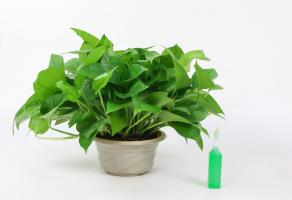What is a Non Vascular Plant?
Non vascular plants, also known as bryophytes, are a group of plants that do not possess vascular tissues to transport water and nutrients throughout the plant body. This feature differentiates them from vascular plants, which have specialized tissues for conducting these essential substances.
Types of Non Vascular Plants
Non vascular plants can be divided into three major groups:
Mosses: These are small, flowerless plants that lack roots and leaves. They possess a simple, non-vascular structure with thin and delicate, usually green, radial stems.
Liverworts: These plants are similar to mosses but have a flattened, lobed shape, sort of like a liver, hence the name 'liverwort.'
Hornworts: These plants are the least studied among the three groups of non vascular plants. They have sporophytes that resemble horns, hence the name 'hornwort.'
Characteristics of Non Vascular Plants
Non vascular plants have evolved some unique characteristics due to their lack of vascular tissues.
Small Size: As they do not possess specialized tissues for transport, non vascular plants often grow in a very small size - they have no way of transporting fluids and essential substances over a long distance, so they grow close to the ground.
Moist Environments: Non vascular plants rely on diffusion to obtain the water and nutrients they need, and this occurs best in moist environments. Without water, they are unable to distribute their vital resources throughout the plant body.
Limited Reproductive Strategies: Non vascular plants have a limited ability to reproduce compared to vascular plants. They reproduce via spores instead of seeds, and many species depend on the growth of water for fertilization.
Uses of Non Vascular Plants
Despite being often overshadowed by vascular plants, non vascular plants serve as an essential component of many ecosystems.
Soil Stabilization: The mat-like structure of many non vascular plants firms up the soil, preventing erosion and soil loss.
Carbon Sink: Non vascular plants are some of the oldest living organisms on earth, making them an essential component of the carbon cycle. They play a critical role in absorbing carbon dioxide, a leading cause of climate change.
Pharmaceuticals: Despite their small size, non vascular plants have many biological compounds and secondary metabolites that have extensive medicinal properties. Some studies have shown that liverworts and hornworts have potent anti-cancer and anti-inflammatory properties.
Conclusion
Non vascular plants may not be as glamorous as their vascular counterparts, but they play a critical role in the ecosystem. They offer many benefits, including soil stabilization, carbon absorption, and pharmaceuticals that make their small stature and lack of specialized tissues seem insignificant.

 how many times do yo...
how many times do yo... how many planted tre...
how many planted tre... how many pine trees ...
how many pine trees ... how many pecan trees...
how many pecan trees... how many plants comp...
how many plants comp... how many plants can ...
how many plants can ... how many plants and ...
how many plants and ... how many pepper plan...
how many pepper plan...





























